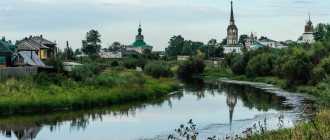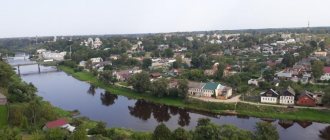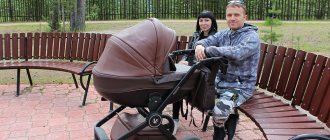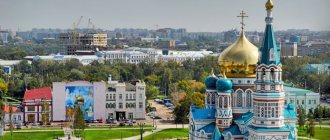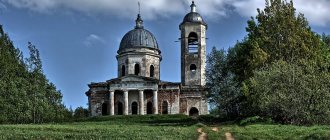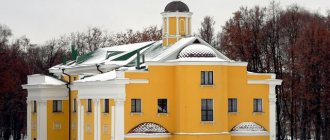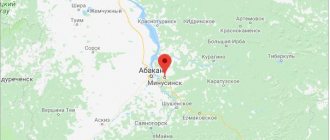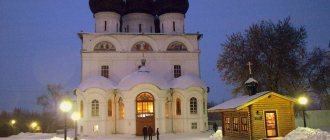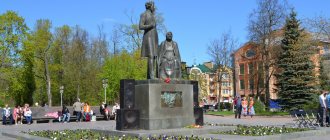Traveling around Russia can be a real discovery for some! Our Motherland is so multifaceted, vast and fraught with so many amazing places that you only have to get acquainted with them once to be forever captivated by tourism in various inconspicuous corners of the country in search of something beautiful and unforgettable! It is about such small towns, which are often lost against the backdrop of the cultural capital and regional centers, that I want to tell you in this article!
Tobolsk
Tobolsk is the first city to become the center of development of Siberia. Founded in 1587, it is famous for its colorful natural landscapes and architecture. You can start getting acquainted with this city from the cultural center, visiting the only stone Kremlin in Siberia, as well as the oldest Orthodox shrine - the Sophia-Uspensky Cathedral, the bell tower of which rises 75 meters.
One of the famous and significant attractions of the city is the prison castle, which will allow you to take a fascinating walk through the entire prison complex and get acquainted with the life of Siberian hard labor and exile. Chernyshevsky, Dostoevsky, Korolenko served their sentences in Tobolsk. You can inspect the cells, go down into the dark dungeon, and even try on the prisoner's uniform and shackles.
By the way, during all this time no one escaped from the Tobolsk prison. The prison regime was considered very harsh. In the hunchbacked punishment cell it was impossible to straighten up to your full height - it was forbidden to sit in it during the day, you could only stand. There are other types of punishment cells, the stay in which was akin to torture - hot, in which instead of one wall there was a stove; cold, no heating; wet, with ankle-deep water in it. The doors of the punishment cell were embossed, with spikes - so that they would not be knocked on. For many, the next refuge after this prison was only a cemetery.
One of the iconic landmarks of the city is the monument to Robinson Crusoe - it is located on Semyon Remezov Street. Oddly enough, the sculpture here is not accidental - few people know that the well-known book hero also traveled through Siberia. This is described in the sequel to Defoe's novel, The Further Adventures of Robinson Crusoe. Robinson arrived in Tobolsk in winter. In the book, the Englishman was amazed to see a brilliant society in the wilderness: princes, courtiers, military men and noble ladies. “Criminals from Muscovy are sent here, given life, because it is impossible to escape from here,” he says through Defoe in the book. In fact, Robinson was supposed to meet in Tobolsk, first of all, the captured Swedes who were sent there by Peter I.
Also in Tobolsk there is the only bone-carving factory in Russia, and therefore the best souvenirs from here will be bone products: keychains, figurines made from deer antlers, sperm whale teeth, mammoth tusks. The products are made almost by hand - such delicate and impeccable work was even awarded European badges of honor. At the factory, you can take a tour and see for yourself the magic of turning bones and tusks into works of art.
Location : in the north of the Tyumen region, at the confluence of the Tobol and the Irtysh.
How to get there : the distance from Tyumen to the city is 246 km, you can get there by train (travel time 4 hours) or by bus. Ticket prices range from 800 to 1500 rubles.
Kazan is the third capital of Russia
The capital of Tatarstan is one of the largest national republics within Russia. Kazan was founded in 1005, that is, it is more than a thousand years old. The city is considered the largest on the Volga River.
The most famous sights of Kazan are the Kul-Sharif Mosque and the Kazan Kremlin. Approximately half of the city's population professes Islam, while the other half adheres to the Orthodox faith. Kazan is an example of a city where representatives of different nations and faiths live in peace and harmony.
Svetlogorsk
This small seaside resort town, located on a picturesque hill off the Baltic coast, is often compared to European capitals due to its beautiful architecture, clean streets, hospitable locals and cozy atmosphere. The city is surrounded by forests and small hills, and its shores offer a wonderful view of the Baltic Sea. Here you can have a great summer vacation, improve your health and relax, and if necessary, get medical treatment in one of the health resorts.
On the main embankment you can see the 10-meter Zodiac sundial, clearly visible from afar. It is in the Guinness Book of Records as the largest sundial in Europe, made using mosaic technique.
Throughout the city, tourists will find numerous sculptures, monuments and memorable compositions, which are unique and interesting in their own way. For example, the sculpture “Ondine” on the embankment opposite the Grand Palace Hotel is a sea deity, a character in the romantic legends of the peoples of Northern Europe; or the Frog Princess, in the park opposite the railway station, which was installed not so long ago but was loved by local residents for its original image and has already acquired its own superstitions. One of the remarkable and beautiful sculptures is “Nymph”, which was made almost a century ago - in 1938.
The calling card of Svetlogorsk is an ancient water tower under a hipped tiled roof, built to supply water to the resort at the beginning of the 20th century. This 25-meter-tall structure resembles the dungeon of a medieval castle. The observation deck on the top floor of the tower offers excellent views of the city. In the same architectural style, there is a rotunda and a military sanatorium building of the Russian Defense Ministry nearby.
The city's greatest attraction is its surroundings - discover the legends of the Amber Coast by visiting the Curonian Spit, which is a UNESCO World Heritage Site. It is worth going up to the observation deck of the Efa Dune, a unique sand mountain. One of the highlights of the reserve is the Dancing Forest. In 1961, young pine trees were planted on one of the sand dunes. But as a result of the displacement of sands, the trees grew with twisted trunks of strange shapes. Another observation deck is Müller Height, which can be reached by steep wooden stairs, enjoying views of spruce plantations along the entire route.
But look for souvenirs in Svetlogorsk right under your feet. The waves bring amber to the shore, which city guests collect as souvenirs. For lovers of aesthetics and original products, the city sells many interesting handmade souvenirs made by local craftswomen from this material. In the galleries, you can even select raw amber and watch the carver create the jewelry you ordered.
In summer, the beaches can be densely dotted with vacationers - you can get to them from the city center by cable car in small trailers. In search of a spacious beach without crowds, you should simply walk along the coast towards the South, there will be a large sandy beach with fewer people. Entrance to the city beach is free, but umbrellas and sunbeds belong to local sanatoriums and can be purchased separately. For those who like to taste national cuisine, you can find a small restaurant “Fisherman's House” on the embankment at the beginning of the promenade near the sundial. The signature dish here is charcoal-grilled Baltic flounder.
Location : on the coast of the Baltic Sea, thirty kilometers northwest of the city of Kaliningrad.
How to get there : the easiest way is by commuter train, travel time is 1.5 hours; or by bus No. 118 - departure from the bus station every 20-30 minutes.
Vladimir
8. The city of Vladimir is the ancient capital of Russia. Since 2016, the city has occupied sixth position in the ranking, this time with a result of 522,864 requests. Vladimir is one of the closest regional centers to Moscow and houses the ancient sights of Russia included in the UNESCO list: the Assumption Cathedral, the Dmitrievsky Cathedral and the Golden Gate monument of defensive architecture. In close proximity to Vladimir there is another architectural masterpiece - the lonely Church of the Intercession on the Nerl, surrounded by the picturesque Bogolyubovsky meadow, especially beautiful during the flood. In recent years, several observation platforms and a pedestrian zone have been improved in Vladimir, which has made the city even more attractive to tourists.
Gorokhovets
The city has an atmosphere of original antiquity and past centuries - Gorokhovets has remained almost untouched since the 17th century. For lovers of museums and architecture of those times, it is worth visiting the Ershov House. There is a historical and architectural museum here, merchant life has been recreated, and exhibitions are being updated.
Lovers of picturesque landscapes should climb Bald Mountain, which is so named because there is practically no vegetation on it. There are even some local legends. Some people believe that witches hold their Sabbaths on Bald Mountain. They dance so much that they trample all the vegetation. Others say that during the Tatar-Mongol invasion the Khan of the Golden Horde was buried here, and Bald Mountain is nothing more than a giant mound.
But in reality, everything is simpler - the mountain is so windy that not a single tree can take root here. Although many visitors note that a strong energy is felt, so some people believe that the place is anomalous.
The visiting card of the city is the famous House of King Peas, where comic performances are held for children, and all visitors are treated to pea puree. The program also includes dancing, interesting stories about ancient Russian customs, riddles, and various competitions.
Wooden horses on wheels will be a good souvenir from Gorokhovets. The very first such toys were made by carpenters - Yakushi. In August, the city even organizes Yakusha Day, which brings together craftsmen from all over the country.
Location : city in the Vladimir region, on the right bank of the Klyazma River.
How to get there : the distance to the city from Vladimir is 172 km, you can get there by train or bus (it will be faster). Travel time is about 3 hours. An option for Moscow is a sightseeing tour of the city (time approximately 15 hours excluding travel).
Anapa
7. Anapa ( 185,170 ) is the second most popular resort in mainland Russia, located between the foothills of the Greater Caucasus and the steppes of the Taman Peninsula. Tourists come here because of the wonderful shallow sandy beaches and almost daily sunny, windless weather. Not far from the city there are a lot of natural attractions, including Cypress Lake Sukko with a planted grove of swamp cypresses. Unlike Sochi, where ski tourism is developed, Anapa is popular only in the summer, so the city could not rise as high in our ranking as the Russian capital of resorts.
Myshkin
The small cozy town is part of the Golden Ring of Russia. Unremarkable at first glance (and previously the city was actually a village), it attracts many tourists from all over Russia thanks to its many unusual places and attractions.
To see the ancient quarters, climb the bell tower of the Assumption Cathedral. This is the main observation deck. And then - forward to the museums that “play on” the name of the city:
Museum of the Mouse . The museum has a lot of drawings, mouse figurines, various accessories and supplies. Here they will tell you a legend. Boyar Mstislavsky was returning from hunting, lay down on the shore and fell asleep. Suddenly a mouse ran across his face. He woke up and saw a poisonous snake. In gratitude for saving his life, the boyar founded a village in this place and named it Myshkino.
Complex "Mouse Chambers". More suitable for children and presents entertaining interactive programs telling about the history of the city and more. And in the basement of the complex, a living corner is open for inspection, where the main inhabitants are mice of different species and subspecies - from ordinary to flying, as well as related species.
Complex at the Chistov estate. There is a museum of felt boots here - you can learn a lot of interesting things about the process of making felt boots, about how the great Russian sovereigns treated felt boots. How felt boots were used to cure hangovers, colds and rheumatism, how felt boots were used by brides to choose a groom. There is also a linen museum here, which has collected a collection of various fabrics, clothing and various products made from this material.
In July, all cheese lovers who are ready to put on their ears and tails are invited to the Mouse Festival in Myshkin. There will be mouse races and fights with cheese pillows. And if you want to refresh yourself, visit the Mousetrap restaurant.
Location : a city in the Yaroslavl region, located on the left, high bank of the Volga, opposite the confluence of the Yukhot River.
How to get there : the distance from Yaroslavl is 149 km, you can get there by bus from the bus station (travel time about 2 hours) - but buses do not run often, only 2-3 trips a day. You can also get there with a transfer in Rybinsk or Uglich.
Test on the topic
- /10
Question 1 of 10What is the name of the capital of Russia?
Start test
Hall of Fame
To get here, take the test.
- Elena Klochkova
8/10
- Natasha Khlebnikova
10/10
- Yulia Microloans
10/10
- Alexander Barsov
8/10
- Dima Kochetkov
6/10
Sortavala
Sortavala is a small city with a population of just under 20 thousand people. It is called the second tourist center of Karelia - it is also the starting point to the island of Valaam. I took a short walk in it during an excursion to Ruskeala. In a couple of hours I managed to get acquainted with several main attractions of the city. The first was the Ladoga Museum - despite its outwardly modest size, when you go inside, you find yourself in a large room full of all sorts of interesting things, one way or another connected with Ladoga. What is there: old boats, fishing gear, parts of boats and ships. Looking at all this wealth, you understand that Lake Ladoga is a real harsh sea.
The Bastion Historical Park is a unique large-scale interactive platform, which is located on the very shore of Lake Ladoga. The territory of the park is a real fortress of the 10th century, where wooden fortress walls, Viking houses, craftsmen's workshops, areas for active activities and exercises - for example, archery - have been recreated. You can approach any character who is a resident of the Fortress and talk to him about his affairs and craft! You can take part in master classes or even transform into a Viking and try on medieval armor!
Residents of the settlement (source: official website bastion-park.ru)
There are various interesting stalls and shops in the city - you can have a bite to eat with fresh Karelian cuisine!
A famous landmark is the Black River. It is really red-black in color - they say black because it contains a large amount of iron salts.
Location : 270 km west of St. Petersburg, on the shores of Ladoga, not far from the Finnish border.
How to get there : the first option is an excursion from St. Petersburg to Ruskeala, which passes through Sortavala; You can get there on your own by train, travel time is 4-5 hours, or by bus No. 805 (Devyatkino metro station, Severny bus station).
Krasnodar
10. Another newcomer to our top 10 popular Russian cities is Krasnodar ( 486,557 ), which is a center of attraction for business people, young people looking for entertainment and families looking to move. Tourists usually visit Krasnodar, as one of the largest cities in the south of Russia, on their way to Adygea and the Black Sea resorts. In summer, the city's popularity increases thanks to an endless series of "delicious" festivals: wine, honey, pizza, tomatoes and watermelon. As for architectural attractions, in the city you can see surviving bits of historical buildings. Just look at the Central Hotel, built in 1881 and reminiscent of the Singer House in St. Petersburg. And the Krasnodar Galitsky Park is known as one of the largest, most beautiful and modern parks in Russia.
Esso
A small village in the depths of Kamchatka, Esso was founded by Evenki people migrating from Sakha in the 19th century. Today it is one of the best destinations for independent travelers on the remote and wild Kamchatka Peninsula, with hiking trails extending into the surrounding Bystrinsky National Park, where horseback riding and dog sledding are available. Hot springs are also abundant - they are even used to heat homes. This quiet town of wooden cottages, known as the “Switzerland of Kamchatka”, is also clean, well-kept and cozy.
The main attraction of Esso is a huge outdoor swimming pool right in the middle of the village, which is supplied with water from hot springs. The village is surrounded by larch taiga and stands on the banks of the ice-free mountain river Uksichan.
The city has a small but unusual Bear Museum. This animal is the master of Kamchatka, having totemic significance for local peoples. The exhibition is also located in the courtyard, where there are wooden sculptures. In the room, a large exhibit attracts attention - a stuffed bear. There are skulls, a cast of a bear's footprint, and many different items dedicated to the lord of the forest. Also interesting is the photographic department, where the clubfoot is captured from all angles and in different situations. There are books, albums, and even videos about bears - all of this can be viewed.
In the ethnographic museum you can get acquainted with the rituals and traditions of the Evenki people - here are household items, shamanic paraphernalia, musical instruments, as well as various artifacts. In the exhibition hall you can see examples of applied art by Kamchatka craftsmen. These products are made from bone, wood, fur, and beadwork is a popular element of their decoration. Souvenirs are also sold here.
In winter, two interesting events take place - the Reindeer Herder's Day holiday and the Beringia sled dog race. They are usually held at the end of February or in March, which is a real winter month in these parts. For the holiday in honor of Reindeer Herder's Day, many people from the surrounding area come together, many events are held, and the ceremony of offering to the Ulekich fire is also held and an Evenki yurt is erected, into which any person can then enter as a guest. And the race takes place in truly harsh conditions - dog sleds overcome mountains and tundra, cross numerous rivers, crossing 12 villages and towns until they reach the finish line.
Many travelers come for hiking and climbing - you can climb the extinct volcano Olengende (almost 2 km high), Alney - the top of the Sredinny Range (2600 m), admire the mountain lakes Ikar and Galyamiki, conquer Plosky Tolbachik (3682 m above sea level) seas).
Location : in the northern part of Kamchatka, 520 km from Petropavlovsk-Kamchatsky, on the banks of the Bystraya River.
How to get there : getting there is problematic, the bus from Petropavlovsk-Kamchatsky runs only 1-2 times a day, travel time is 10 hours, there is no train. You can only fly to Kamchatka from other regions of Russia - prices are very high, especially in the summer, the cost of a flight can reach 100 thousand rubles.
Voronezh
According to the rating of original Russian cities conducted by the Russia 24 channel, Voronezh occupies fourth place on the list. This is facilitated by the exploits of residents in military battles, the construction of ships begun by Peter I, and architectural monuments from the time of Nicholas II. Plunging into the history of the city, do not forget to visit Divnogorye with its magnificent natural landscapes. An excursion to the castle of Princess of Oldenburg will be interesting. The ghost of a sweet girl is still seen here, wandering at night and frightening people unfamiliar with the history.
The reflections of the modern city only decorate the centuries-old identity of Voronezh
You will also like Kostomarovo with its exhibition of mammoths and skeletons of prehistoric animals. Don't miss the stud farm in Khrenovo, where first-class trotters are bred, some of the best horses in Russia and around the world.
For a long time, the city was a secret object thanks to the research institutes and factories located in it, but now tourists will be happy to learn about the places about which legends were formed in the history of the Russian state.
Shlisselburg
This small town translated from German “Schlüsselburg” means “key city”. Near the city there is Orekhovy Island, the main attraction of which is the ancient Novgorod fortress of the 14th century. Therefore, the history of Shlisselburg goes back a long way. The city was founded as the Oreshek fortress by the Novgorod prince Yuri Danilovich in 1323, who founded a wooden fortress on Orekhovy Island. A lot of hazel grew here - hazelnut, hence the name of the island. And on the island the fortress was named Oreshek. The city has a complicated and eventful history - it was captured by the Swedes and for almost 100 years it belonged to Sweden, but Peter I was able to return the city to Russia - and together with the captured city, he gained access to the North Sea.
Near the city there is Orekhovy Island, the main attraction of which is the ancient Novgorod fortress of the 14th century. Therefore, the history of Shlisselburg goes back a long way. The city was founded as the Oreshek fortress by the Novgorod prince Yuri Danilovich in 1323, who founded a wooden fortress on Orekhovy Island. A lot of hazel grew here - hazelnut, hence the name of the island. And on the island the fortress was named Oreshek. The city has a complicated and eventful history - it was captured by the Swedes and for almost 100 years it belonged to Sweden, but Peter I was able to return the city to Russia - and together with the captured city, he gained access to the North Sea.
The city is rich in attractions and interesting museums that reflect its centuries-old history. The most famous are: the diorama museum “Breaking the Siege of Leningrad”, the museum of naval guns “Echoes of Great Battles”, Petrovsky Bridge, the pier and the monument to Peter the Great.
The city will be of interest primarily to lovers of history and architecture. Cozy streets, stately houses from the era of Peter I, the Ladoga canal system - a “monument of engineering” of the 18th century.
But most often people come to the city for the Oreshek fortress, located on an island near the city. The ancient and beautiful fortress is included in the UNESCO World Heritage List and is an object of cultural significance of the Russian Federation of federal significance. This is a monument to ancient Russian architecture and fortification from the time of Peter I; there was a terrible prison for political prisoners here, and here the fate of besieged Leningrad was decided.
The fortress began to be restored only in 1966, but complete reconstruction is still far away. The fortress continues to collapse and collapse due to funding problems. There are two prison premises available for inspection: the Secret House and the New Prison. You can walk along the restored section of the fortress wall. Just keep in mind that the fortress is open to visitors during the warm season, from May 1 to October 31.
Location : in the Kirov district of the Leningrad region.
How to get there : the distance from St. Petersburg is only 50 km, you can get there by bus (No. 575 from the Ulitsa Dybenko metro station, or No. 440 from the Rybatskoye metro station), by train (from the Finlyandsky station to the Petrokrepost stop, after which need to cross the Neva).
Have you been to any of the cities from the article? Or maybe you also know amazing and interesting little-known cities in Russia that are worth visiting?
